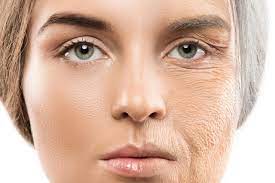Does Plastic Surgery Age Well?
Introduction
Plastic surgery has become a beacon of hope for many seeking to enhance their appearance and boost their confidence. However, as we age, it’s crucial to understand the long-term effects and how well these cosmetic changes can withstand the test of time. In this comprehensive guide, we’ll delve into whether plastic surgery ages gracefully and what you can do to maintain your results.
Does Plastic Surgery Age Well?
The longevity of plastic surgery results can vary significantly, influenced by factors such as the type of procedure, the skill of the surgeon, and the patient’s lifestyle.
Factors influencing how plastic surgery ages
- Type of procedure: Some surgeries have more lasting results than others.
- Patient’s skin quality: Elasticity and collagen levels play a role.
- Lifestyle choices: Sun exposure, smoking, and diet can affect aging.
- Surgeon’s expertise: A skilled surgeon can provide more durable results.Factors Influencing Aging of Plastic Surgery
Factor
Impact on Aging
Skin ElasticityDecreases with age, affecting the longevity of facelifts and other skin-tightening proceduresFacial Structure ChangesBone resorption and fat redistribution can alter the results of procedures like rhinoplasty and faceliftsLifestyle ChoicesSmoking, sun exposure, and diet can accelerate aging and impact the durability of plastic surgery results
Longevity of Plastic Surgery Results
- Individual results may vary, and touch-ups might be necessary.
- Some procedures may require maintenance treatments.
The Aging Process and Plastic Surgery
Aging can alter the outcomes of plastic surgery, with skin elasticity and facial structure changes being significant factors.
Book A Consultation With Dr Tarek Bayazid
Top-rated Plastic Surgeon For Eyelid Surgery in Dubai
Installment Plan Available
How aging affects different types of plastic surgery
- Facelifts: May need revisions as skin continues to age.
- Breast augmentations: Can be affected by gravity and hormonal changes.
The impact of skin elasticity and facial structure changes
- Loss of collagen: Leads to sagging skin, affecting the results.
- Bone resorption: Changes in facial bones can alter the appearance post-surgery.
Surgical Procedures and Their Longevity
Rhinoplasty Over the Years
The nose’s shape can change due to aging, potentially altering the results of rhinoplasty.
Changes in nose shape as you age
- Cartilage growth: Can affect the nose’s appearance over time.
- Skin changes: Thinning skin can reveal underlying structures more clearly.
Facelift Durability
Facelifts are designed to combat signs of aging, but they do not stop the aging process.
How facelifts hold up with advancing age
- Skin quality: Better skin quality can lead to longer-lasting results.
- Technique: Modern techniques may offer more enduring outcomes.
Body Contouring and Time
Procedures like liposuction and tummy tucks can be affected by weight fluctuations and aging.
The effects of aging on procedures like liposuction and tummy tucks
- Weight gain: Can alter the sculpted appearance.
- Skin laxity: May reduce the tightness achieved by the procedure.
Non-Surgical Procedures and Aging
Non-invasive treatments often require regular maintenance to sustain results.
Long-term results of fillers, Botox, and other non-invasive treatments
- Fillers: May need periodic re-injection.
- Botox: Typically lasts 3-6 months before requiring a new session.
The Decade-by-Decade Guide to Plastic Surgery
Twenties: Starting Early
Young adults should consider the long-term implications of plastic surgery.
Considerations for young adults seeking plastic surgery
- Future changes: How aging can affect early surgical interventions.
- Preventative care: Starting skincare routines to prolong results.
Thirties: Maintaining Results
This is a time to focus on preserving the outcomes of earlier procedures.
Strategies for preserving plastic surgery outcomes in your thirties
- Skincare regimen: Importance of a consistent routine.
- Healthy lifestyle: Impact of diet and exercise on maintaining results.
Forties and Fifties: Adjusting Expectations
Mid-life changes can necessitate revisions or additional procedures.
How mid-life changes can affect previous plastic surgery
- Hormonal shifts: Can influence skin texture and fat distribution.
- Lifestyle adjustments: Adapting to changes in metabolism and skin care needs.
Sixties and Upward: Aging Gracefully
Older individuals may need to manage expectations and maintenance differently.
Managing the effects of plastic surgery in later life
- Revisions: Potential need for touch-ups or additional surgeries.
- Aging naturally: Embracing changes while maintaining a healthy appearance.
Patient Care and Maintenance
Proper aftercare and lifestyle choices are essential for prolonging the results of plastic surgery.
Tips for prolonging the results of plastic surgery
- Follow-up appointments: Regular check-ins with your surgeon.
- Sun protection: Using sunscreen to prevent premature aging.
- Nutrition and hydration: Eating well and drinking plenty of water for skin health.
Choosing the Right Surgeon
Selecting a board-certified plastic surgeon like Dr. Tarek is crucial for achieving lasting and satisfying results.
The importance of selecting a board-certified plastic surgeon
- Training and experience: Ensures the surgeon is qualified.
- Patient outcomes: A reputable surgeon should have a portfolio of successful procedures.








